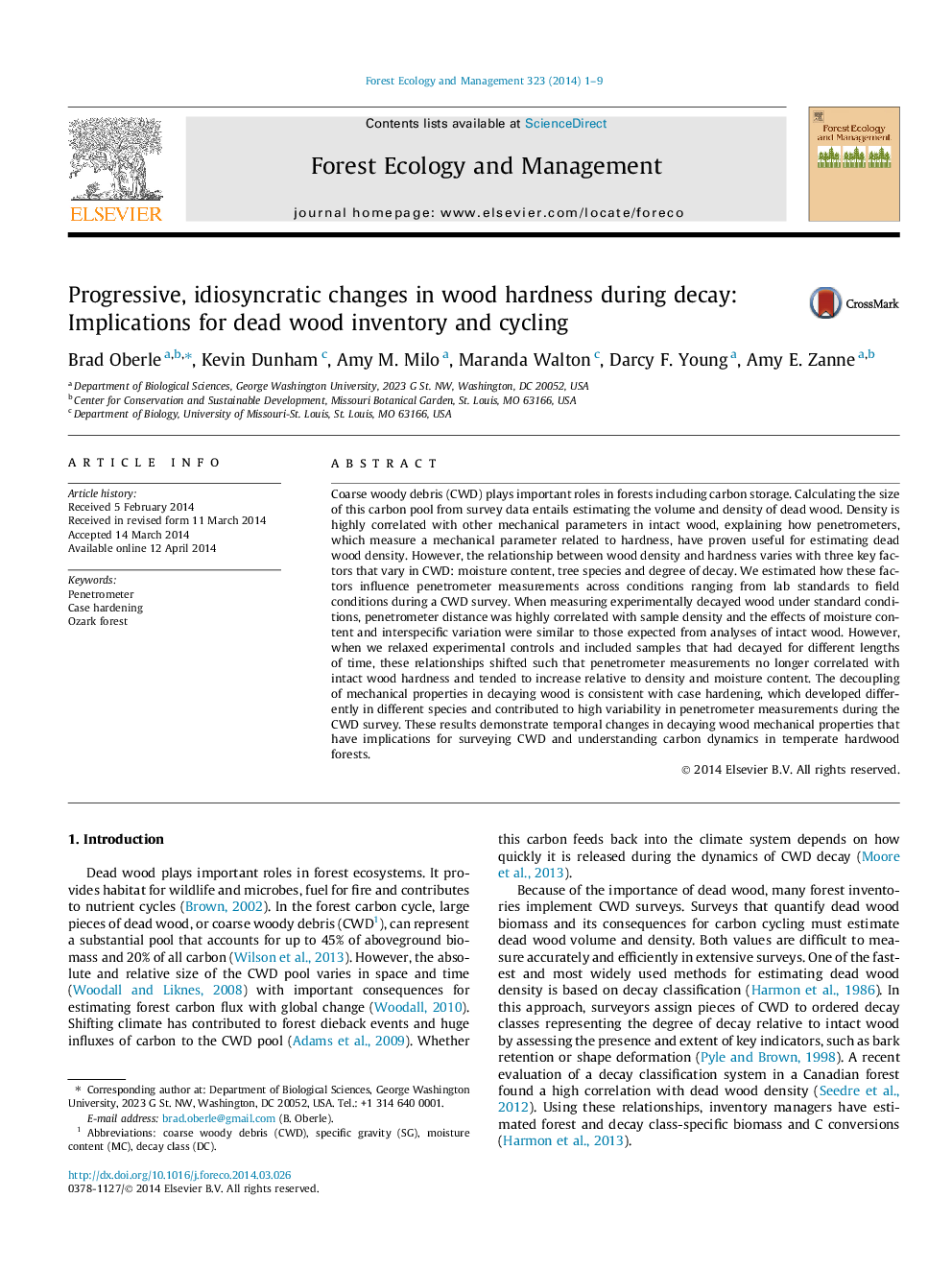| کد مقاله | کد نشریه | سال انتشار | مقاله انگلیسی | نسخه تمام متن |
|---|---|---|---|---|
| 86679 | 159206 | 2014 | 9 صفحه PDF | دانلود رایگان |
• Moisture, tree species and decay influence dead wood hardness and density.
• Decayed wood penetrometer measurements reflect intact wood Janka hardness initially.
• Hardness and density change differently during decay as case hardening develops.
• Differences in the prevalence of case hardening may influence C cycling.
Coarse woody debris (CWD) plays important roles in forests including carbon storage. Calculating the size of this carbon pool from survey data entails estimating the volume and density of dead wood. Density is highly correlated with other mechanical parameters in intact wood, explaining how penetrometers, which measure a mechanical parameter related to hardness, have proven useful for estimating dead wood density. However, the relationship between wood density and hardness varies with three key factors that vary in CWD: moisture content, tree species and degree of decay. We estimated how these factors influence penetrometer measurements across conditions ranging from lab standards to field conditions during a CWD survey. When measuring experimentally decayed wood under standard conditions, penetrometer distance was highly correlated with sample density and the effects of moisture content and interspecific variation were similar to those expected from analyses of intact wood. However, when we relaxed experimental controls and included samples that had decayed for different lengths of time, these relationships shifted such that penetrometer measurements no longer correlated with intact wood hardness and tended to increase relative to density and moisture content. The decoupling of mechanical properties in decaying wood is consistent with case hardening, which developed differently in different species and contributed to high variability in penetrometer measurements during the CWD survey. These results demonstrate temporal changes in decaying wood mechanical properties that have implications for surveying CWD and understanding carbon dynamics in temperate hardwood forests.
Journal: Forest Ecology and Management - Volume 323, 1 July 2014, Pages 1–9
